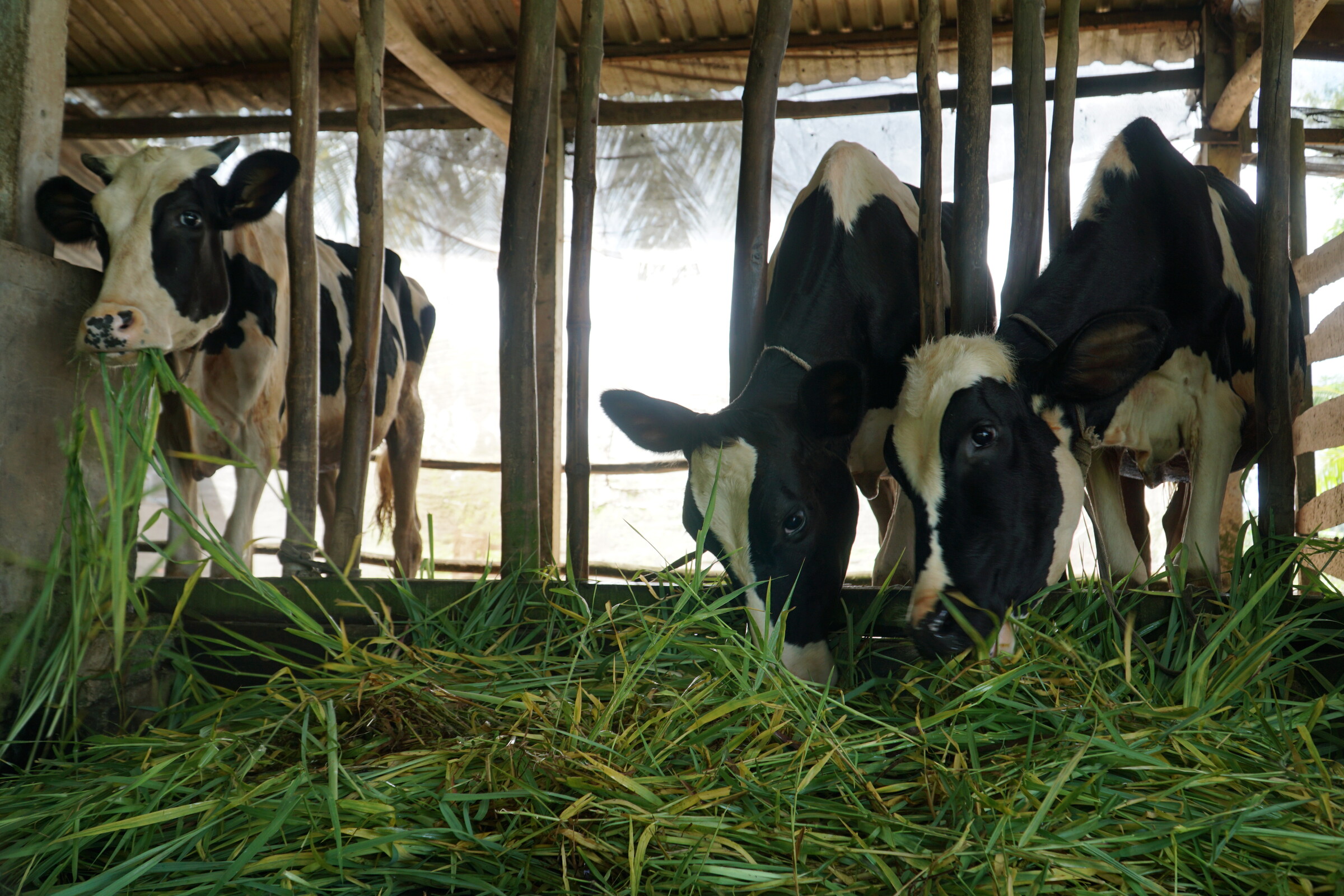At a seminar on "The current situation and solutions to restore the dairy herd" on 23/9, Dr. Luong Anh Dung from the Large Livestock Breeding Association shared that after a period of growth at a rate of 15.4% annually, the total dairy herd has only increased by 1.9% annually from 2015 to 2020. In the last 5 years alone, dairy farming growth has been around 0.4% per year.
Vietnam currently has an average of only 3.3 dairy cows per 1,000 people, one-third of the rate in Thailand and Japan, and one-half of South Korea's.
 |
Dr. Luong Anh Dung from the Large Livestock Breeding Association speaking at the seminar on 23/9. Photo: Gia Chinh |
Dr. Luong Anh Dung from the Large Livestock Breeding Association speaking at the seminar on 23/9. Photo: Gia Chinh
With the national dairy herd currently at approximately 326,000 cows, Dr. Dung believes that the 2030 Development Strategy's goal of 500,000 cows "certainly cannot be achieved".
"Without reasonable recovery solutions, not only Ho Chi Minh City but also other dairy farming localities like Hanoi and Phu Tho, especially small-scale household farming models, are at risk of collapse", Dr. Dung added.
 |
Dairy cows in Can Tho (formerly Soc Trang). Photo: Ngoc Tai |
Dairy cows in Can Tho (formerly Soc Trang). Photo: Ngoc Tai
Dr. Nguyen Xuan Duong, President of the Vietnam Animal Husbandry Association, expressed concern over the decline in dairy farming even during the most active period for the milk market. Thousands of companies are involved in processing, but consumers are unsure which milk brands offer quality.
"No country has a developed dairy industry without relying on domestic farming", he said, adding that the dairy sector needs up to 10 years to recover, while other livestock sectors only take a few years.
Due to the decline in the total herd, the growth rate of raw fresh milk production has also plummeted, from 17.7% annually between 2010 and 2015 to 6.7% between 2015 and 2020, and 3.3% in the past 5 years.
Ho Chi Minh City has recorded the most severe decline in dairy herds, currently at nearly 37,300 cows. According to statistics, in the past 10 years, the total herd has decreased by 68.19%, along with a 72.64% decrease in the number of farming households.
Le Viet Hai, Deputy Director of Ho Chi Minh City's Animal Husbandry and Veterinary Sub-Department, explained that several factors contribute to this decline. Dairy farming requires substantial investment and high professionalism, but agricultural land, especially for grass cultivation, is shrinking. Additionally, household farming scales remain small, production costs are high, and product consumption is unstable.
Hai also pointed to rapid urbanization as a cause, shrinking land availability, increasing production costs, and lowering the efficiency of machinery investments. These factors discourage farmers from confidently investing in mechanization to keep up with current trends.
Meanwhile, there are no appropriate regulations for milk business and processing to encourage domestic raw milk production. This leads companies to primarily import reconstituted milk powder rather than purchasing raw materials from domestic farmers.
For household dairy farming to develop, a representative from the Sub-Department of Animal Husbandry and Veterinary of Ho Chi Minh City suggests that authorities need to plan sustainable farming areas. Along with this, preferential credit policies are needed to encourage households to invest in technological equipment, automated barns, and modern waste treatment systems to protect the environment.
Sharing this view, Dr. Dung said farming households must connect with each other in cooperatives to diversify, enhance product value, and increase income.
For production enterprises, he suggests mandatory regulations requiring them to have or be linked to domestic raw material areas, and provide technical support and stable purchase prices for farming households. Management agencies also need to establish minimum standards for manufacturers regarding the minimum proportion of domestic milk ingredients used, for example, 5-10%, similar to other countries.
Gia Chinh












